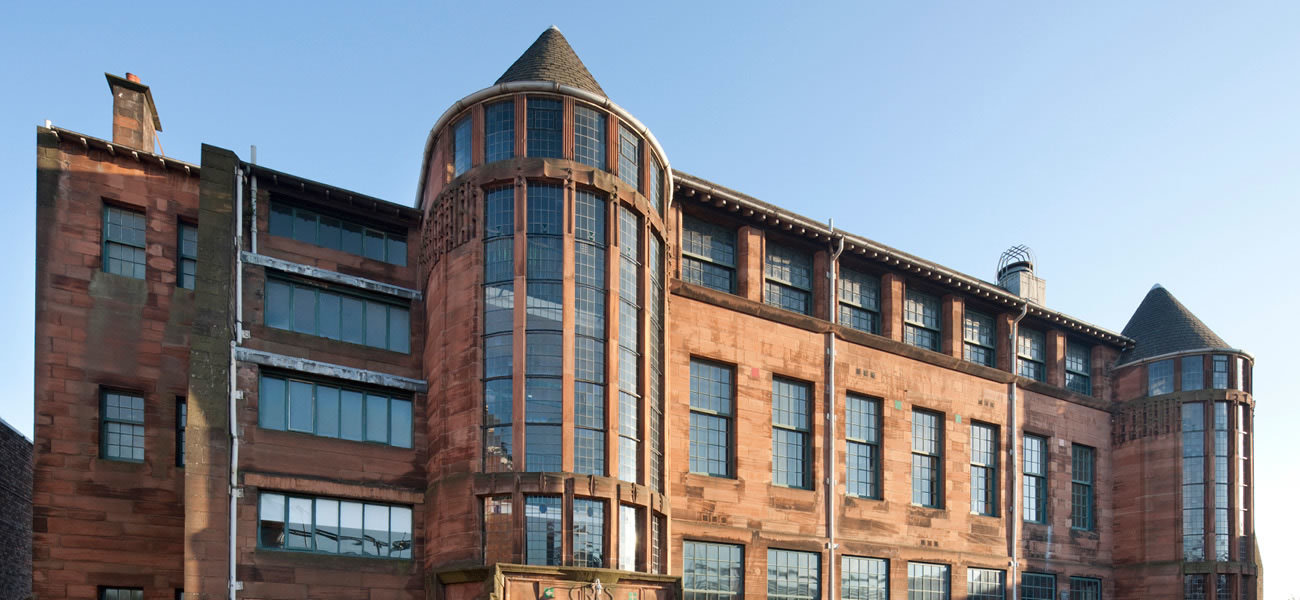
2018 marks the 150th anniversary of Charles Rennie Mackintosh’s birth in Glasgow.
Margaret Stewart, an architectural history lecturer at the University of Edinburgh, tells Laura Smith the Honest Truth about one of the most innovative architects of the 20th Century.
What made Mackintosh so iconic?
His style is very distinctive. He is one of the few architects with his own style name. All students of architecture are taught about Mackintosh and Glasgow Style.
How would you describe that style?
He is best known for his white rooms – in place of the heavy upholstery and dark wood interiors of the Victorian period he introduced uncluttered white rooms, with touches of coloured glass, high back chairs and flowing lines. However, his style went on developing and he experimented with dark walls and more geometric shapes.
Who were “The Glasgow Four”?
In 1900 Mackintosh married Margaret Macdonald, and his friend Herbert McNair married her sister Frances Macdonald.
They were all students at Glasgow School of Art and were introduced by the headmaster. They became known as The Glasgow Four and developed some of the most exciting art of the period in the UK.
‘Giant cage’ to protect Helensburgh’s crumbling Charles Rennie Mackintosh House
Was his work ahead of its time?
Mackintosh’s designing was regarded as innovative and probably too challenging for some of the more traditional architects working in Scotland, so he did receive criticism. However, in Vienna he was described as the architect who had “shown us the way” to the new style.
Where can we find his most famous work?
We are fortunate to have most of it here in Scotland. Glasgow School of Art is his masterpiece.
There’s also the Queen’s Cross Church (home of the Charles Rennie Mackintosh Society), Scotland Street School and the Willow Tea Rooms on Sauchiehall Street.
Have you discovered any unusual facts about Mackintosh?
If you would like to acquire a genuine Mackintosh, look out for the book cover designs he made for Blackie, the Glasgow publisher. These can still be found in secondhand bookshops.
Is it true he was once arrested as a German spy?
Yes. At the outbreak of the First World War, he and Margaret visited Walberswick in Suffolk.
His Scots accent, strange form of dress (he wore a long Inverness cape), and his letters arriving at the post office with German postmarks, lead locals to believe he was a German spy, and he was put under house arrest. Later all charges were dropped but Mackintosh was greatly upset and never returned there.
What happened to Mackintosh later in life?
In 1913, Mackintosh and Margaret moved to England but from 1923 architectural commissions dwindled. They were living between London and the south of France, where he focused on landscape painting. While in France, he fell ill with cancer. He died in London in 1928.
How important has his contribution been to Glasgow?
It’s immeasurable. Mackintosh embodies so much of the spirit of the great city – innovative, art-loving, dynamic, experimental and humane.
How will the anniversary be celebrated?
Kelvingrove Art Gallery and Museum, the Charles Rennie Mackintosh Society, Hunterian Mackintosh Collection and National Trust for Scotland are all planning a range of exciting events and exhibitions. The Willow Tea Rooms will reopen in June following a £10 million renovation programme.
Edinburgh-based Craft Design House has also commissioned Mackintosh-inspired work by various Scottish designers for its Reflecting Mackintosh range, available from museum, heritage and cultural centre gift shops.

Enjoy the convenience of having The Sunday Post delivered as a digital ePaper straight to your smartphone, tablet or computer.
Subscribe for only £5.49 a month and enjoy all the benefits of the printed paper as a digital replica.
Subscribe